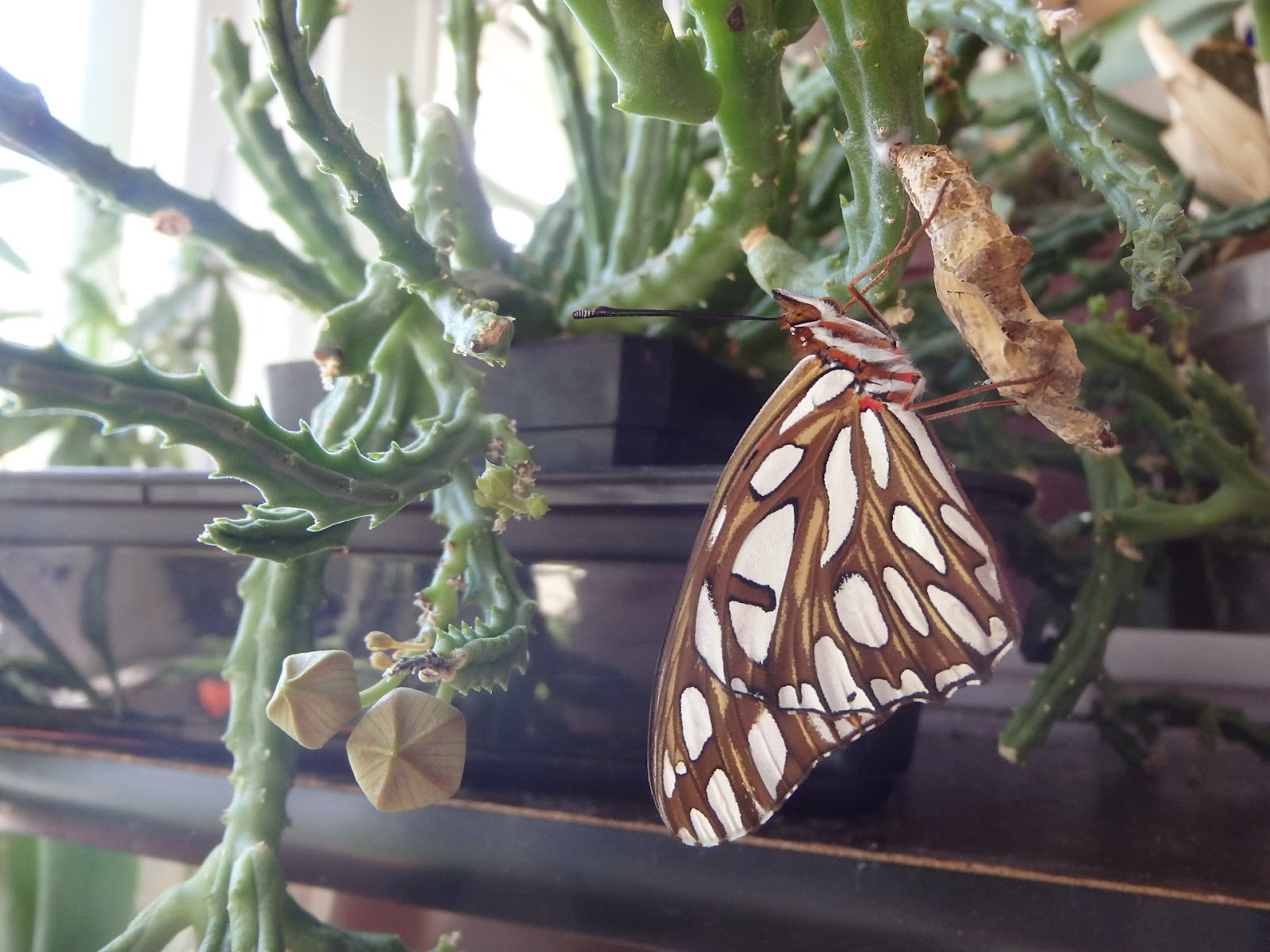Passiflora x 'Sunburst'
Quickly, about the vine: It is a hybrid of two tiny tropical species of passionvine. It bears inch-wide turpentine-fragranced flowers over wildly-shaped purple-backed spotted leaves. It's a windowsill novelty for people who suffer chrinic novelty-osis.
The bug: a green larvae. Since it was on a passionvine, I imagined it might become a Longwing Butterfly. We'd see. Larvae consume a great deal of leafy material to grow up, and that twig of a baby vine would not be enough- on top of which, that would be twenty-five dollars and ninety-five cents worth of insufficient bug food instead of pretty flowers.
But, as luck would have it, I had a fat mason-jar full of Passiflora x 'Clear Sky' cuttings on my kitchen table from my parent's garden. (This is a hardy German hybrid- it can be grown outdoors in a fertile, watered, climber-friendly warm position.) These leaves were plentiful and gastronomically compatible.
(The monster flowers of the tropical-looking Passiflora x 'Clear Sky' bred by one Roland Fischer, on a fence in my Parent's Garden)
Anyhow, while I was out of town, the little bugger ate its fill of Passionvine cuttings, undocumented by my camera, and promptly pupated; attaching its butt to a Stapelia plant in the windowsill.
Do you see it? It's brown. How fun the chrystalis/pupa curves the same way as the Stapelia sticula branches. And it sat. Changing quietly. Or wiggling wildy when budged. Butterfly pupae do this.
'Ere she came, one fine morning, when, of course, I was headed out of town again. It was also the middle of November; no time for a butterfly, who really barely belongs in Colorado at all.
But we enjoyed this creature immensely and the few weeks it lived in the kitchen.
Gulf Fritillary, or Agraulis vanillae.
The spots on the undersides are somewhere in between reflective and opalescent. This bug was fortunate, at least, I suppose, to have two plants in bloom from which to feed in the kitchen. (I never saw it actually consume anything.) -The only place it would ever be as an adult.
I'll let you think about the point of life when, like the butterfly's, was full of destiny (hey- I dind't squish it and I happened to have the exact exotic plant to feed it) is ideal (lacking predators), is more celebrated and observed than most others of its kind (you are participating in this truth) , but lonely, contained, and never procreating…
I'd like to think it's not so bad.







No comments:
Post a Comment